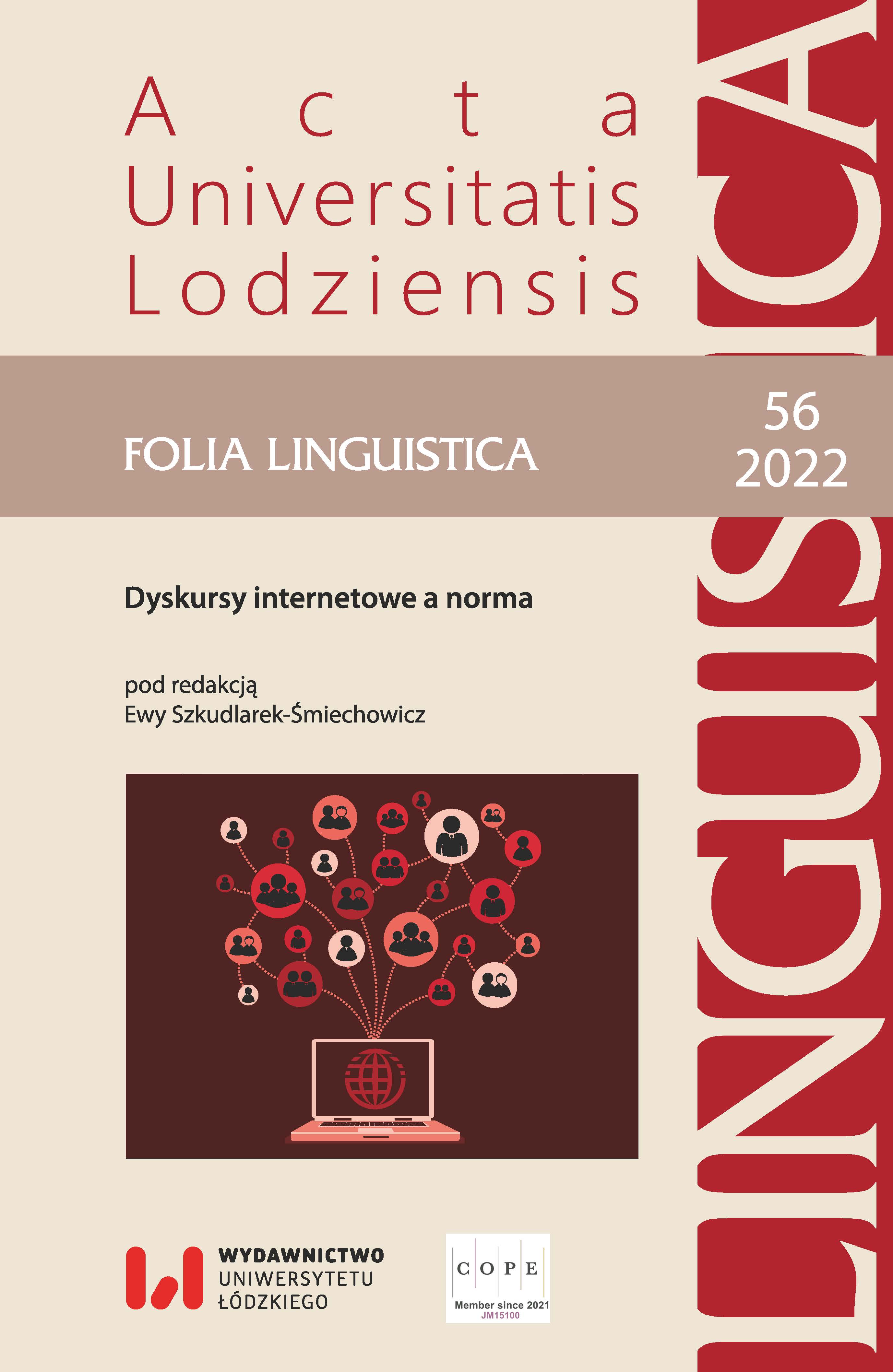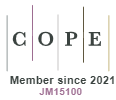Przekroczenie normy językowej w memach internetowych jako strategia perswazji
DOI:
https://doi.org/10.18778/0208-6077.56.09Słowa kluczowe:
gra językowa, intertekstualność, memy internetowe: kontekstualne, autonomiczne, perswazjaAbstrakt
Mem internetowy to funkcjonujący przede wszystkim w przestrzeni internetu multimodalny gatunek mowy, oparty na intertekstualności, wielokrotnie powielany i rozprzestrzeniany (Wójcicka 2019: 24), który pełni głównie funkcje perswazyjno-ludyczne. Celem niniejszego artykułu jest analiza: 1) memów, których tematem jest przekroczenie normy językowej przez bohaterów memu, oraz 2) zasad tworzenia memów ukazujących przekroczenie normy językowej przez aktorów sceny politycznej lub zwykłych obywateli. Artykuł stanowi próbę odpowiedzi na pytania: 1) Jakie elementy językowe spoza przyjętej normy (zarówno wzorcowej, jak i użytkowej) są ukazywane w memach? 2) Jaki obraz bohatera wyłania się z jego wypowiedzi usytuowanych poniżej normy językowej? 3) Jaki autowizerunek kreuje nadawca memu, piętnując nieprawidłowe użycie języka przez bohatera? 4) Jakie są funkcje memów ukazujących wypowiedzi spoza normy językowej?
Pobrania
Bibliografia
Buttler D., 2001, Polski dowcip językowy, Warszawa: Wydawnictwo Naukowe PWN.
Google Scholar
Buttler D., Kurkowska H., Satkiewicz H., 1971, Kultura języka polskiego. Zagadnienia poprawności gramatycznej, Warszawa: Państwowe Wydawnictwo Naukowe.
Google Scholar
Cialdini R., 2017, Pre-swazja. Jak w pełni wykorzystać techniki wpływu społecznego, przekł. S. Pikiel, Sopot: Gdańskie Wydawnictwo Psychologiczne.
Google Scholar
Dobek-Ostrowska B., 1999, Podstawy komunikowania społecznego, Wrocław: Astrum.
Google Scholar
Genette G., 2013, Palimpsesty. Literatura drugiego stopnia, przekł. T. Stróżyński, A. Milecki, Gdańsk: słowo/obraz terytoria.
Google Scholar
Komorowski radzi jak żyć za 2 tys. zł. „Trzeba zmienić pracę i wziąć kredyt”, 2015, https://www.gazetaprawna.pl/wiadomosci/artykuly/870975,komorowski-radzi-jak-zyc-za-2-tys-zl-trzeba-zmienic-prace-i-wziac-kredyt.html (dostęp: 30.05.2021).
Google Scholar
Markowski A., 2005, Kultura języka polskiego: teoria, zagadnienia leksykalne, Warszawa: Wydawnictwo Naukowe PWN.
Google Scholar
Memobłędy, b.r., https://clickcommunity.pl/memobledy/ (dostęp: 20.07.2021).
Google Scholar
Naruszewicz-Duchlińska A., 2017, Kilka refleksji na temat memów internetowych, w: I. Hofman, D. Kępa-Figura (red.), Współczesne media. Gatunki w mediach. Prace dedykowane Profesor Marii Wojtak, Lublin: Wydawnictwo Uniwersytetu Marii Curie-Skłodowskiej, s. 251–263.
Google Scholar
Niekumata mamuśka, b.r., https://fabrykamemow.pl/szablon/239/memy/page/13?sortuj=najnowsze (dostęp: 31.05.2021).
Google Scholar
Oleksy J., 2011, Największe wpadki, https://wiadomosci.wp.pl/najwieksze-wpadki-6105535532786305g/15 (dostęp: 30.05.2021).
Google Scholar
Poreda L., 2013, Prezydent Komorowski nie chce patronować Paradzie Równości, https://wawalove.wp.pl/prezydent-komorowski-nie-chce-patronowac-paradzie-rownosci-6178457861932673a (dostęp: 30.05.2021).
Google Scholar
Prezes Orlenu Daniel Obajtek przeklinał, bo ma zespół Tourette’a? Specjaliści zabierają głos, 2021, https://wydarzenia.interia.pl/kraj/news-prezes-orlenu-daniel-obajtek-przeklinal-bo-ma-zespol-tourett,nId,5078033 (dostęp: 5.06.2021).
Google Scholar
Rurku? E, to dobrze że mnie słuchasz…, 2009, https://www.youtube.com/watch?v=N5vw87STryI (dostęp: 30.05.2021).
Google Scholar
Warchala J., 2019, Formy perswazji, Katowice: Wydawnictwo Uniwersytetu Śląskiego.
Google Scholar
Wójcicka M., 2019, Mem internetowy jako multimodalny gatunek pamięci, Lublin: Wydawnictwo Uniwersytetu Marii Curie-Skłodowskiej.
Google Scholar
Pobrania
Opublikowane
Jak cytować
Numer
Dział
Licencja

Utwór dostępny jest na licencji Creative Commons Uznanie autorstwa – Użycie niekomercyjne – Bez utworów zależnych 4.0 Międzynarodowe.










